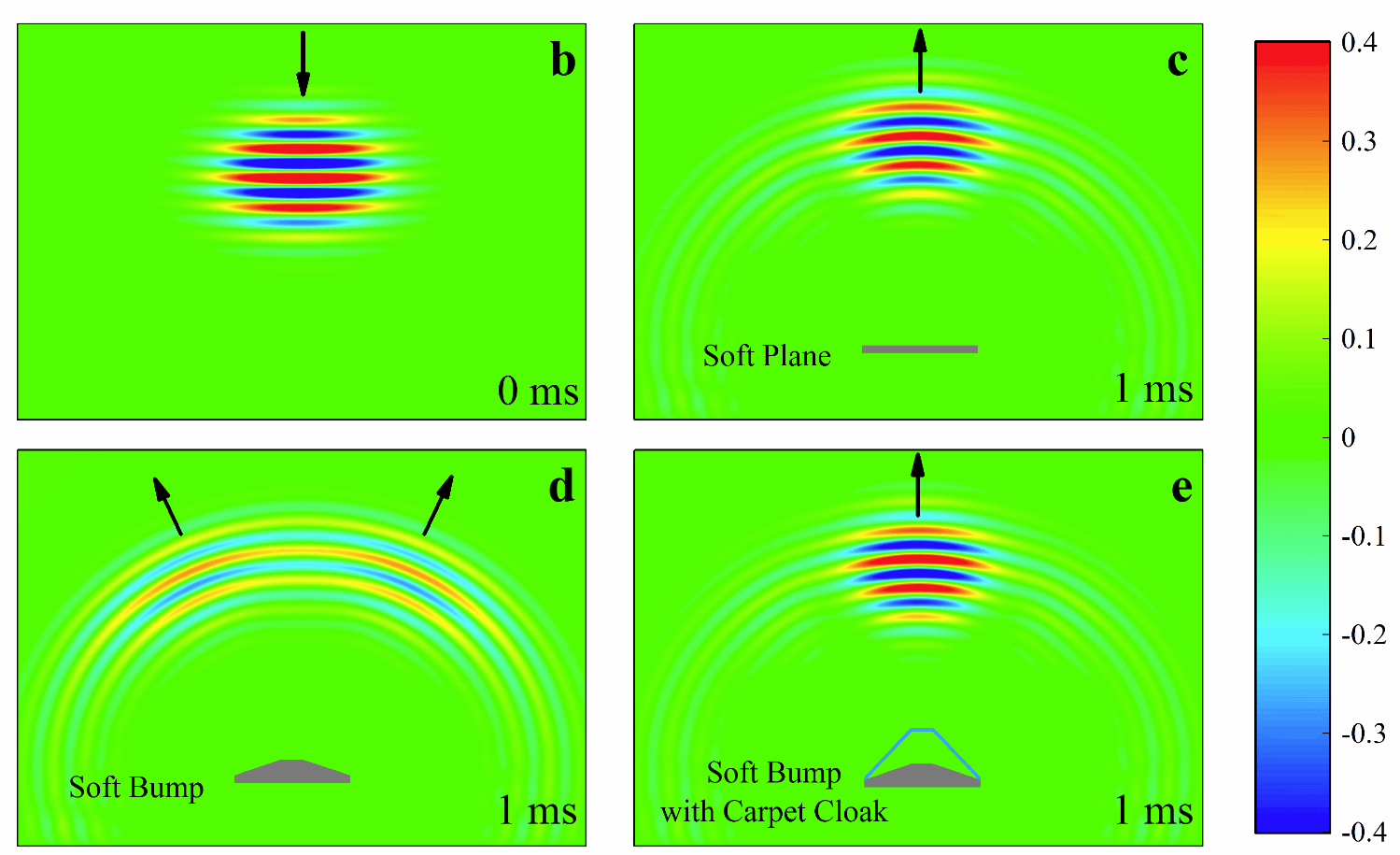The carpet cloak is designed to hide the objects placed on a reflecting surface. It has increasingly become a topic of considerable interest. The experimental realization of acoustic carpet cloak in air host has been reported. However, because of the difficulty in obtaining the unit cell in reality, the underwater carpet cloak still remains in simulation thus far.
Now, a realizable underwater acoustic carpet cloak is designed and fabricated for the first time by using the method of transformation acoustics. It has been achieved by a research team from the Institute of Acoustics (IOA) of the Chinese Academy of Sciences.
The structure of carpet cloak, which is comprised of layered brass plates, is greatly simplified at the cost of some impedance match. A good performance of the proposed carpet cloak is demonstrated from the experimental results in a wide frequency range. The underwater acoustic carpet cloak, whose unit cell size is close to one fortieth of the wavelength, shows the ability to control the underwater acoustic wave in the deep subwavelength scale. This may bring great potential engineering applications in the practical underwater devices.
The proposed carpet cloak, simple and effective, is highly praised by the peer reviewers. “The materials of the carpet cloak are very simple, which are the multilayers composed of brass and water. Both the simulations and experiments match each other very well. I highly recommend to publish this paper in Scientific Reports”.
Their research results have been published in Scientific Reports 7, Article number: 705 (2017).
The method to design the carpet cloak, named transformation acoustics, has been introduced to design new acoustic devices nowadays. The carpet cloak, which is proven to be practically feasible, is one of the most significant applications in transformation acoustics. It can modify the acoustic signature of the target and mimics the acoustic field obtained from a reflecting plane, so that the cloaked target is indistinguishable from the reflecting surface.
In the following realization of the carpet cloak, researchers introduce a scaling factor, so the structure of the carpet cloak is greatly simplified at the cost of some impedance match. It can be found that material with anisotropic mass density is required in realizing the carpet cloak. It is known that there is no natural material with anisotropic mass density. Nevertheless, it has been demonstrated from the Biot fluid theory that layers of isotropic materials can present effective anisotropic mass density in long wavelength regime. As a result, layers of brass plate with small channels filled with water are brought to construct the quasi-two-dimensional model, as shown in Fig. 1.
Fig. 2 shows the simulated results of the acoustic pressure fields in different cases. A short Gaussian pulse propagates towards the targets and then reflects back. When it is reflected from a soft plane, the beam keeps its Gaussian shape and propagates from bottom to top in the backscattering direction. In contrast, the soft bump separates the beam into two parts and also causes a phase advance compared with the soft plane. However, by covering the soft bump with the carpet cloak, the scattered wave returns to the backscattering direction. Its shape, amplitude and propagating direction are identical to those when the target is a soft plane. The cloaked object successfully mimics the reflecting plane and it is invisible under the sound detection.

Fig. 1 Photograph of the fabricated sample (Image by IOA)

Fig. 2 Numerical simulations of the underwater carpet cloak (Image by IOA)
In 2013, researchers also from the Institute of Acoustics of the Chinese Academy of Sciences represented a carpet cloak in air, which was published in Journal of Applied Physics (Volume 113, Issue 2, January 2013). Further, this recent research completed by a research team from the same research institute presents an important step in the implementation of an underwater acoustic carpet cloak.
This research team from the Institute of Acoustics of the Chinese Academy of Sciences which focuses on the metamaterial is led by Prof. YANG Jun and Dr. JIA Han. Prof. YANG Jun engages in the researches on sound, vibration and signal processing, especially in sound field control and array signal processing. They also make efforts in other devices based on metamaterial to manipulate the propagation of the sound wave. They believe the metamaterial will spread widely in the future.
Reference:
BI Yafeng, JIA Han, LU Wenjia, JI Peifeng and YANG Jun. Design and Demonstration of an Underwater Acoustic Carpet Cloak. Scientific Reports 7, Article number: 705 (2017). DOI:10.1038/s41598-017-00779-4
Contact:
YANG Jun
Key Laboratory of Noise and Vibration Research, Institute of Acoustics, Chinese Academy of Sciences, 100190 Beijing, China
E-mail: jyang@mail.ioa.ac.cn


